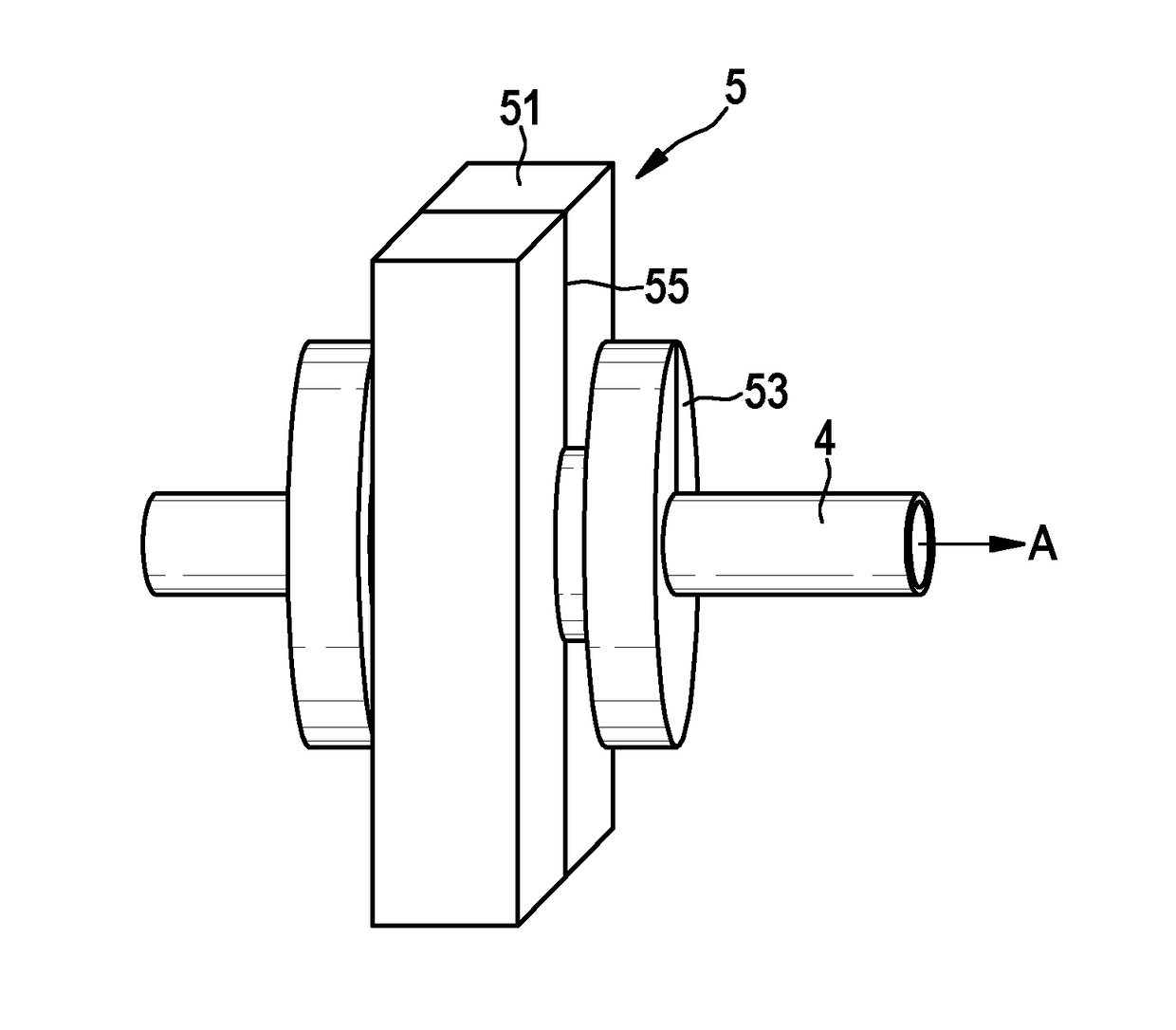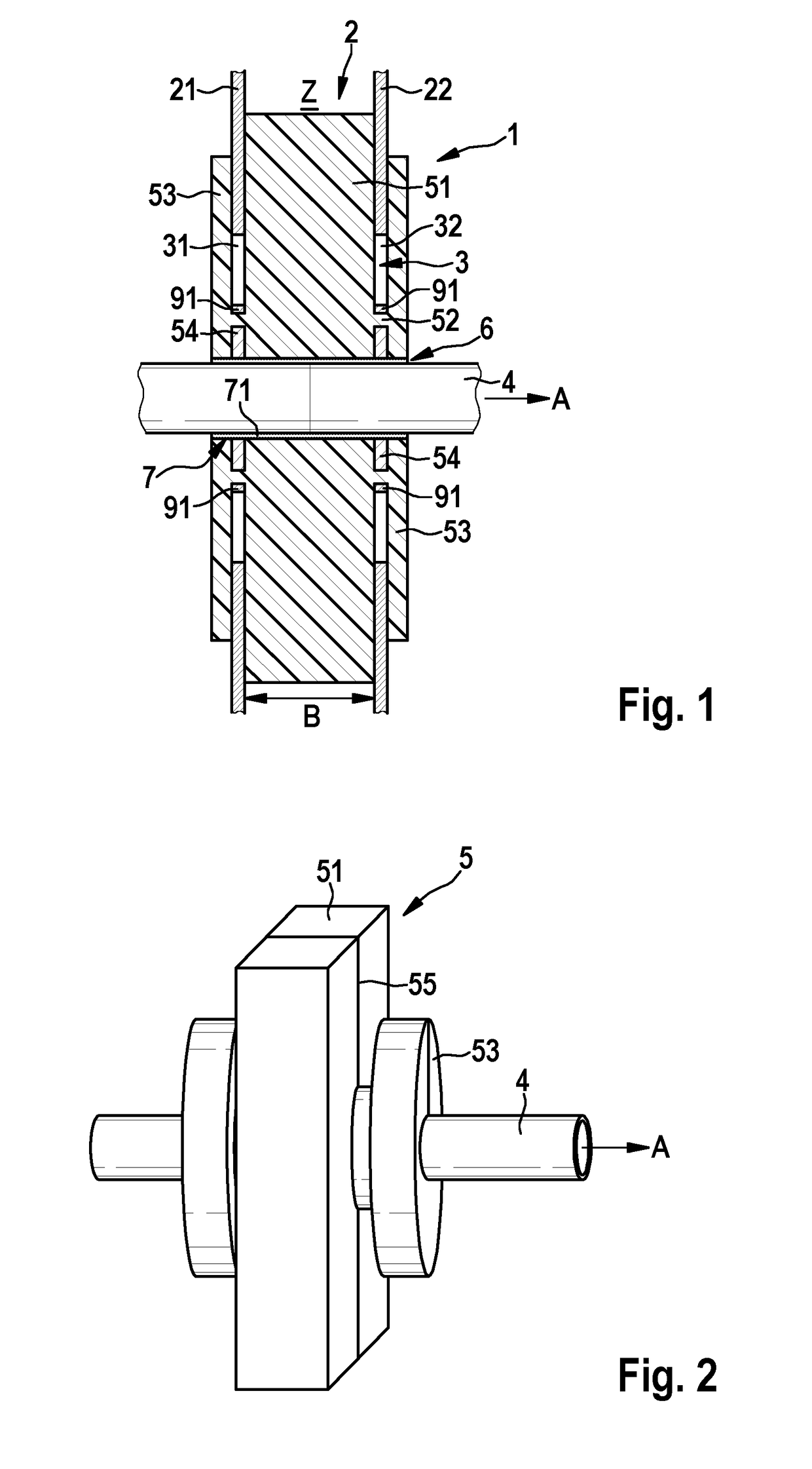Line leadthrough for the leadthrough of lines through a component
a leadthrough and leadthrough technology, applied in the direction of electrical equipment, building components, construction, etc., can solve the problems of weak mechanical forces between the wall and the line routed, cracks and gaps may be formed in the filling material, and the previous approach of filling the intermediate space between the line and the inner wall of the passage opening is not optimal
- Summary
- Abstract
- Description
- Claims
- Application Information
AI Technical Summary
Benefits of technology
Problems solved by technology
Method used
Image
Examples
Embodiment Construction
[0041]FIG. 1 schematically illustrates a cross-sectional diagram of a line penetration 1 through a building part 2, such as through a wall or ceiling of a building. FIG. 2 shows line penetration 1 without building part 2, and FIG. 3 shows a perspective diagram of line penetration 1 inserted into building part 2.
[0042]Building part 2 has a first building-part wall 21 and a second building-part wall 22, which are disposed opposite one another with a spacing and form an intermediate space Z. Building-part walls 21, 22 are preferably disposed with surfaces parallel to one another. As an example, such a building part 2 may be a drywall, wherein these building-part walls 2122 are frequently gypsum boards or the like.
[0043]Building-part walls 21, 22 have a first or a second wall opening 31 or 32, which are disposed opposite one another relative to intermediate space Z. A passage opening through building part 2 is formed by wall openings 31, 32. In the present exemplary embodiment, wall ope...
PUM
 Login to View More
Login to View More Abstract
Description
Claims
Application Information
 Login to View More
Login to View More - R&D
- Intellectual Property
- Life Sciences
- Materials
- Tech Scout
- Unparalleled Data Quality
- Higher Quality Content
- 60% Fewer Hallucinations
Browse by: Latest US Patents, China's latest patents, Technical Efficacy Thesaurus, Application Domain, Technology Topic, Popular Technical Reports.
© 2025 PatSnap. All rights reserved.Legal|Privacy policy|Modern Slavery Act Transparency Statement|Sitemap|About US| Contact US: help@patsnap.com



